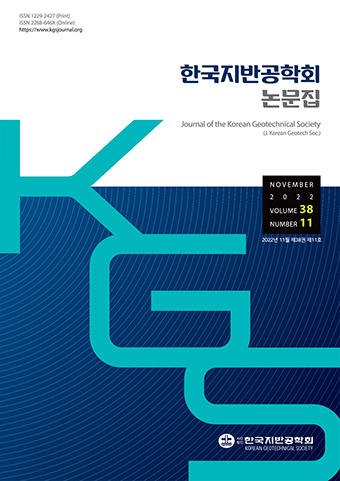Research Article
Abstract
References
Information
Maurer, B. W., Green, R. A., Cubrinovski, M., and Bradley, B. A. (2014), "Evaluation of the Liquefaction Potential Index for Assessing Liquefaction Hazard in Christchurch, New Zealand", Journal of Geotechnical and Geoenvironmental Engineering, Vol.140, No.7, 04014032.
10.1061/(ASCE)GT.1943-5606.0001117Youd, T. L. and Idriss, I. M. (2001), "Liquefaction Resistance of Soils: Summary Report from the 1996 NCEER and 1998 NCEER/NSF Workshops on Evaluation of Liquefaction Resistance of Soils", Journal of geotechnical and geoenvironmental engineering, Vol.127, No.4, pp.297-313.
10.1061/(ASCE)1090-0241(2001)127:4(297)- Publisher :The Korean Geotechnical Society
- Publisher(Ko) :한국지반공학회
- Journal Title :Journal of the Korean Geotechnical Society
- Journal Title(Ko) :한국지반공학회 논문집
- Volume : 35
- No :6
- Pages :5-15
- Received Date : 2019-03-27
- Revised Date : 2019-05-07
- Accepted Date : 2019-05-08
- DOI :https://doi.org/10.7843/kgs.2019.35.6.5




 Journal of the Korean Geotechnical Society
Journal of the Korean Geotechnical Society








